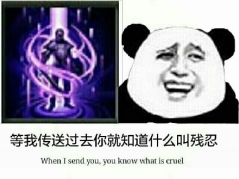-
Today to talk ⼀ Perform mechanism chat events
Combined event last foundation share with you, if you have not seen the children's shoes, the following is a portal
[js] Detailed event on

-
So what is the mechanism Perform events it?
Thinking ⼀ problem
when ⼀ a zoomed one hour for nested submenus box box submenus, and the submenus are two boxes click event
you click on the screen for ⼩ ⾥ submenus box, click on the events on the screen for the outside box zoomed submenus or not perform?

1. dissemination events
Like the ⾯ that figure still pictures ⼀ kind, we click at the same time in red box submenus body, also click in the box on the powder discolored submenus, this is an established fact, then two boxes of submenus that will trigger the click event, this is called propagation of an event
- When the trigger element ⼀ event, which ⽗ elements will trigger the same event, ⽗ elements ⽗ elements will trigger the same event, like the still pictures on the screen for map-like ⼀
- Click on the box in red submenus when triggered in red box submenus click event,
- Click on the box is in the submenus powder discolored, and discolored pink box submenus will trigger the click event,
- Also click on the body, the body will trigger a click event,
- Also click on the html, html will trigger the click event,
- Also click on the document, the document will trigger a click event,
- Also click on the window, the window will trigger a click event,
- In other words, whichever is the element on ⻚ ⾯ trigger event, will eventually lead to one level one level window of the same event trigger ,Provided that all levels of the elements must have the same event registration, or will not trigger
-
In the course of the event spread, there ⼀ some points need to be noted:
1.只会传播同类事件 2.只会从点击元素开始按照 html 的结构逐层向上元素的事件会被触发 3.内部元素不管有没有该事件,只要上层元素有该事件,那么上层元素的事件就会被触发 -
Up to now, we have to understand the propagation of an event, let us think ⼀ problem
-事件确实会从⾃⼰开始,到window的所有相同事件都会触发,是因为我们点在⾃⼰身上,也确实逐层的点在了直⾄window的每⼀个元素身上 -但是到底是先点在⾃⼰身上,还是先点在了window身上呢? -先点在⾃⼰身上,就是先执⾏⾃⼰的事件处理函数,逐层向上最后执⾏window的事件处理函数 -反之,则是先执⾏ window 的事件处理函数,逐层向下最后执⾏⾃⼰身上的事件处理函数
2. bubbling, capture, destination time standard
- We just talked to each ⼀ events, it is likely to ⼰ from Auto to window, there may be multiple Perform the same type of event.
- Then the order will have to perform to ⼀ some comments.
Destination time mark
- Are you click on which element in the body, then this event destination time standard is what.
Bubbling and capture

 Event stream
Event stream
- 事件流是描述的从⻚⾯接受事件的顺序,当⼏个都具有事件的元素层叠在⼀起的时候,那么你点击其中⼀个元素,并不是只有当前被点击的元素会触发事件,⽽层叠在你点击范围的所有元素都会触发事件。事件流包括两种模式:冒泡和捕获。
事件冒泡
- 就是从事件 ⽬标 的事件处理函数开始,依次向外,直到 window 的事件处理函数触发,也就是从下向上的执⾏事件处理函数
事件捕获
- 就是从 window 的事件处理函数开始,依次向内,只要事件 ⽬标 的事件处理函数执⾏,也就是从上向下的执⾏事件处理函数
冒泡和捕获的区别
- 就是在事件的传播中,多个同类型事件处理函数的执⾏顺序不同
3. 阻⽌事件传播(冒泡和捕获)
3.1 事件触发(⽬标)对象及兼容
cancelBubble=true IE写法
stopPropagation() 其他浏览器

3.2 ⽬标对象/触发对象
事件对象.target || window.event.srcElement;
【注】事件是由谁⽽起。
4. 事件委托

-
就是把我要做的事情委托给别⼈来做
-
因为我们的冒泡机制,点击⼦元素的时候,也会同步触发⽗元素的相同事件
-
所以我们就可以把⼦元素的事件委托给⽗元素来做
好处:
1、节省资源同时减少了dom操作,提⾼性能
2、对于新添加的元素也会有之前的事件
4.1 事件触发
- 点击⼦元素的时候,不管⼦元素有没有点击事件,只要⽗元素有点击事件,那么就可以触发⽗元素的点击事件
<script>
var oUl = docuemnt.querySelector('ul')
oUl.addEventListener('click', function (e) {
console.log('我是 ul 的点击事件,我被触发了')
})
</script>
<body>
<ul>
<li>1</li>
<li>2</li>
<li>3</li>
</ul>
</body>
像上⾯⼀段代码,当你点击ul的时候肯定会触发
但是当你点击li的时候,其实也会触发
4.2 target
- target 这个属性是事件对象⾥⾯的属性,表示你点击的⽬标
- 当你触发点击事件的时候,==你点击在哪个元素上,target就是哪个元素 ==
- 这个target也不兼容,在 IE下要使⽤srcElement
<script>
var oUl = docuemnt.querySelector('ul')
oUl.addEventListener('click', function (e) {
e = e || window.event
var target = e.target || e.srcElement
console.log(target)
})
</script>
<body>
<ul>
<li>1</li>
<li>2</li>
<li>3</li>
</ul>
</body>
上⾯的代码,当你点击ul的时候,target就是ul
当你点击在 li 上⾯的时候,target就是 li
4.3 委托
- 这个时候,当我们点击 li的时候,也可以触发ul的点事件
- 并且在事件内部,我们也可以拿到你点击的到底是ul还是li
- 这个时候,我们就可以把 li 的事件委托给 ul 来做
<script>
var oUl = docuemnt.querySelector('ul')
oUl.addEventListener('click', function (e) {
e = e || window.event
var target = e.target || e.srcElement
// 判断你点击的是 li
if (target.nodeName.toUpperCase === 'LI') {
// 确定点击的是 li
// 因为当你点击在 ul 上⾯的时候,nodeName 应该是 'UL'
// 去做点击 li 的时候该做的事情了
console.log('我是 li,我被点击了')
}
})
</script>
<body>
<ul>
<li>1</li>
<li>2</li>
<li>3</li>
</ul>
上⾯的代码,我们就可以把 li 要做的事情委托给 ul 来做
5. 默认⾏为
- 默认⾏为,就是不⽤我们注册,它⾃⼰就存在的事情
- ⽐如我们点击⿏标右键的时候,会⾃动弹出⼀个菜单
- ⽐如我们点击a标签的时候,我们不需要注册点击事件,他⾃⼰就会跳转⻚⾯
- 这些不需要我们注册就能实现的事情,我们叫做默认事件
5.1 阻⽌默认⾏为
有的时候,我们不希望浏览器执⾏默认事件
- ⽐如我给 a 标签绑定了⼀个点击事件,我点击你的时候希望你能告诉我你的地址是什么
- ⽽不是直接跳转链接
- 那么我们就要把a标签原先的默认事件阻⽌,不让他执⾏默认事件
我们有两个⽅法来阻⽌默认事件
e.preventDefault() : ⾮ IE 使⽤
e.returnValue = false :IE 使⽤
我们阻⽌默认事件的时候也要写⼀个兼容的写法
<a href="https://www.baidu.com">点击我试试</a>
<script>
var oA = document.querySelector('a')
a.addEventListener('click', function (e) {
e = e || window.event
console.log(this.href)
e.preventDefault ? e.preventDefault() : e.returnValue =false;
})
</script>
这样写完以后,你点击 a 标签的时候,就不会跳转链接了
⽽是会在控制台打印出 a 标签的 href 属性的值
总结:
-
为什么要⽤事件委托?
我⻚⾯上本身没有 li 我通过代码添加了⼀些 li,但是添加进来的 li 是没有点击事件的 我每次动态的操作完 li 以后都要从新给li绑定⼀次点击事件⽐较麻烦 这个时候只要委托给 ul 就可以了 因为新加进来的 li 也是 ul 的⼦元素,点击的时候也可以触发ul的点击事件 -
事件委托的书写
元素的事件只能委托给结构⽗级或者再结构⽗级的同样的事件上 li 的点击事件,就不能委托给 ul 的⿏标移⼊事件 li的点击事件,只能委托给 ul 或者在⾼⽗级的点击事件上
【重点】好了以上就是JS事件详解的所有内容,以后还会对js事件有所补充,感兴趣的朋友们可以点赞关注走一波。

